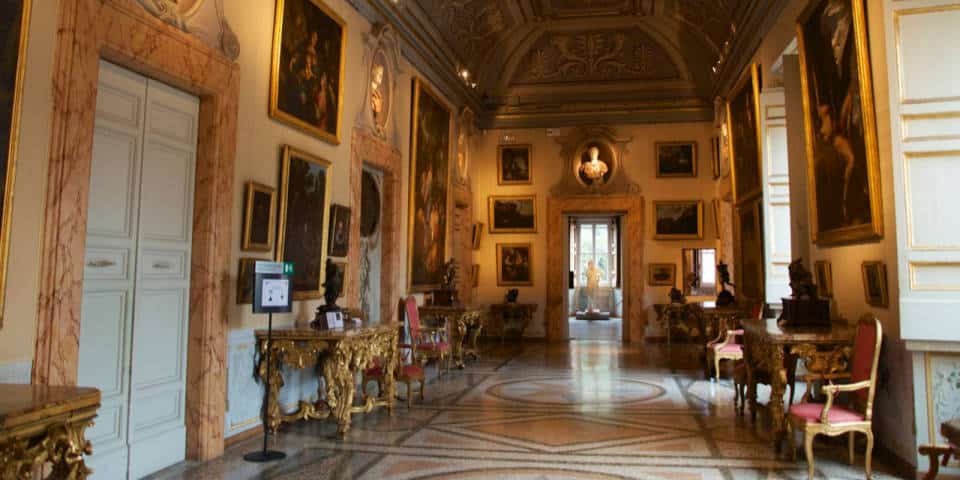

24847 views
Written by: Kate Zusmann

| Tickets |
Buy tickets online: |
|---|---|
| Tip | A ticket to the Corsini Gallery also includes a visit to the Barberini Palace. |
| Opening Hours |
Sunday:
-
Tuesday:
-
Wednesday:
-
Thursday:
-
Friday:
-
Saturday:
-
|
| Closest bus stops |
|
| Closest subway stations |
|
| Address | Via della Lungara, 10, Roma |
| Website | www.barberinicorsini.org |
The Corsini Gallery (Galleria Corsini) located in the 15th-century Corsini Palace (Palazzo Corsini) in Trastevere Neighborhood. The original building had modifications from 1659 until 1689. It served as the residence for Queen Christina of Sweden, who lived in Rome from 1654 until she died in 1689.
Moreover, the art museum is part of Italy’s Arte Antica collection, where the Corsini family donated most of the masterpieces in the 1800s.
Contents
ToggleThe 15th-century palazzo in the Trastevere area served as an away-from-home palace for Queen Christina of Sweden, who abdicated her throne and lived in Rome for 35 years. Today, the Corsini Palace houses the original half of Rome’s National Gallery (Galleria Nazionale d’Arte Antica) paintings, while another part is in the Barberini Palace.
Most of the works are by 16th and 17th century Italian artists.
The building started to belong to the Corsini family when Lorenzo Corsini became pope in 1736 with the name Clement XII. He commissioned the architect Ferdinando Fuga to restructure the building and expand it.
In 1883, the Corsini Gallery became the first national gallery of Italy and its collections were donated to the newly-formed Kingdom of Italy.
Today, the part of the palace is home to the Accademia dei Lincei. Moreover, the library of the Academy contains a collection of books by Cardinal Neri Corsini. Also, the garden nowadays houses the Botanical Gardens of Rome.
You might also like the Best Restaurants in Trastevere with Local Italian Food.
Around 1605, Caravaggio dealt with St John the Baptist about two compositions: one in the Kansas City Gallery and the second in Rome’s National Gallery. The first one is laid out vertically, while the second one is horizontal. In the Roman version, only one cypress tree trunk is located on the left, while the Kansas version is set before many plants. Undoubtedly, both masterpieces are impressive.
Guido Reni, in turn, created “Salome with the Head of St. John the Baptist” 30 years later than Caravaggio, in 1630-35.
The Bolognese painter depicted one of the New Testament’s stories. Salome, the daughter of Herodias, pleased her father, Herod Antipas, by dancing at his birthday celebration; he promised to realize her wish. However, prompted by her vengeful mother, Salome asked for the head of John the Baptist, whom Herod had imprisoned for condemnation of marriage. So the painting illustrates the moment when the head of the saint is presented to the daughter.
See also a list of artworks by Caravaggio that can be seen in Rome.
Author: Kate Zusmann
This website uses cookies. For more info read the cookies policy
Rome.us © 2025. Created with love by Roman experts and guides.